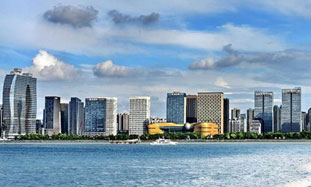Natural Resources
Zhejiang is a high yield comprehensive agricultural area in China. Hangzhou-Jiaxing-Huzhou Plain and Ningbo-Shaoxing Plain are famous granaries and silk and tea producing areas.
Zhejiang's tea, silk, aquatic products, citrus and bamboo products occupy an important position nationwide. The Zhoushan fishery in Zhejiang is the largest in China due to abundant marine resources.
The province is abundant in nonmetallic mineral resources, and the East China Sea continental shelf basin is rich in oil and natural gas resources with good drilling prospects.
It is also endowed with lush mountains and exquisite waters, and is rich in historical and cultural resources. It has 22 national tourist attractions, four national tourist resorts, 10 national nature reserves, 30 national garden cities, 11 national wetland parks, 39 national forest parks and five national urban wetland parks. It also has the nine national historical cultural cities of Hangzhou, Ningbo, Shaoxing, Quzhou, Jinhua, Linhai, Jiaxing, Huzhou and Wenzhou, 20 national historical cultural towns and 28 national historical cultural villages; the number of its national historical cultural towns and villages ranks first in the country.
Zhejiang has a forest area of 90,886,500 mu (about 60,594 square kilometers), about half of which is designated ecological public welfare forest at or above the provincial level. The province's forest coverage rate is 61 percent and it has a total storage volume of 314 million cubic meters of living trees, in the forefront of China.

[Photo/WeChat account: zjfabu]

 Print
Print Mail
Mail
 20 Cultural Symbols
20 Cultural Symbols Why Zhejiang
Why Zhejiang Experiencing high-tech products at WIC
Experiencing high-tech products at WIC Zhejiang Release
Zhejiang Release Zhejiang News
Zhejiang News